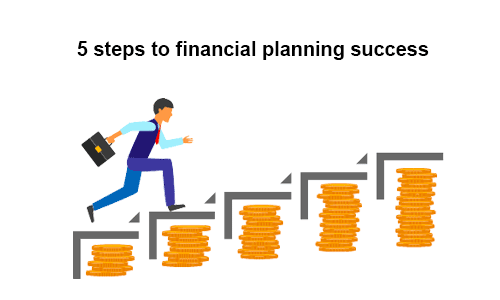Active vs Passive Investment – Understanding the Differences
With the investment landscape taking over the world, an increasing number of people are looking out for options to put their money into the market and have it grow substantially over time. Slowly but steadily, wealth building is becoming a common practice.
Keeping that in mind, it becomes crucial to discuss the two most important concepts of the investment world – active and passive investment. These are the two major ways to put your money on the market. Both active and passive investing target the benchmark indices like the DMF index or the S&P/Hawkamah index and aims to replicate or outdo them.
This article will explore the topic of active vs passive investment in the UAE. Let’s begin by understanding how these strategies work, their pros and cons, and which one suits a certain investor.
What is Active Investment?
The active investment style involves frequent trading with the goal of beating the average return of the index and scoring high-profit margins. You can recall what you have seen in several movies circling the Wall Street operations – active investment is much like what’s shown in these movies and shows. However, given the advancement of technology and digitisation of the world, people can now be active investors from the comfort of their homes using their smartphone applications.
Investment professionals, also referred to as fund or portfolio managers, help the folks who don’t wish to be a part of the investment and trading world themselves. Such professionals can be found with asset management companies that handle mutual funds or exchange-traded funds.
Active investment requires fund managers and active investors to regularly assess the economic and market trends. The major task involved with active investment is to capitalise on the short-term fluctuation of prices of the assets included in any given portfolio. This means that active investment plans can only be successful with constant monitoring and all hands on board.
Advantages of Active Investment
Let’s cover some common advantages of active investing:
- Flexibility: Taking a defensive stance of holding on to the assets is possible when you are involved with the active investment. This can help you avoid exemplary losses when the market is down. In the same way, it is also possible to reallocate assets and get more equity to make the best of the booming market. With active participation and evaluation, active investment opens several opportunities to surpass the benchmarks of the market and gain exceptional returns.
- Hedging: Active investors can use advanced strategies like hedging to minimise the risk by putting themselves in an offsetting position. An off-setting position is simply a position or action that cancels or minimises the losses or liabilities arising from the original position the investor was in.
For instance, let’s assume Ms A bought 10 shares of XYZ company for AED 50 each. She also chose to purchase a ‘put option’ for AED 2 with a validity of 1 year. The put option will allow her to sell her shares for AED 48 at any time during the year, meaning that Ms A can beat her potential losses if the market crashes in the next year. If the price of XYZ’s shares increases to AED 60 instead of decreasing, Ms A would stand at a total loss of AED 20 (the price of the put option) but will have unrealised gains worth AED 80 (total – price of the put option).
In this case, purchasing a put option serves as the off-set position for Ms A. She now has a way to sell her shares at minimal losses instead of losing her entire investment.
Disadvantages of Active Investment
Given below are a few drawbacks of active investment management:
- Highly Volatile: The most prominent drawback of active investment is the volatility of the market. While this paves way for higher gains, it also puts investors at the risk of incurring catastrophic losses. This makes active investment a poor choice for individuals who wish to target growth and need to build a steady return and capital.
- Considerable Expenses Involved: As most people cannot be active investors while holding their regular jobs, they choose to get a fund manager instead. The fund managers, however, charge a management fee from all their clients, generally in the form of a percentage of the profit that clients make. Passive investment also incurs certain fees, although they are much lower compared to the fees and charges associated with active investment. This is because the transaction costs as well as analysing costs are far higher for active investing.
- Ability to Assume: This is not a disadvantage per se but rather a risk that investors have to take. Investors have to assume that their portfolio managers know the best when to sell and when to hold and when to horde. While portfolio managers are highly trained individuals and keep regular track of the market, there is a chance of errors every now and then, which can incur losses for you.
What is Passive Investment?
Passive investment is done with an “in for a long-haul” mentality. The buying and holding action take precedence here and make it a highly cost-effective way of investing. Here, every little fluctuation in the stock market doesn’t trigger an action from the investor. Successful passive investing is about keeping the eye on the final prize and skilfully ignoring the small setbacks that come along the way.
Passive investors generally purchase a passive index fund leading to ownership of shares of multiple companies in a small amount. The major earning of passive investors comes from the profits that companies earn over time by mirroring the market performance of major indices. As there are only a few transactions involved in passive investing, the fees are considerably low as well. The goal of passive investment is to gradually build wealth and grow money.
In passive investment, fund managers create a diverse portfolio of single stocks of different companies that are known as passive index funds. These portfolios aim to match the performance of major market indices, hence offering maximum profits in the long run. Investors can purchase these indices just like how they can purchase and trade stocks in the stock market.
Advantages of Passive Investment
Let’s first go through some advantages of passive investing:
- Low-Risk Investment: As passive investment requires you to invest in funds rather than stocks, it divides and dilutes the risk profile – the chance of one stock tanking your whole investment is diminished in this case. Here, even if one stock in your portfolio performs badly, the other well-performing stocks can cover the loss. As active portfolio diversification is not required here, less work and lesser risk with decent returns become the highlight of the package.
- Lower Associated Costs: Passive portfolio management replicates and follows the benchmark indices. Since the idea is to buy and hold, regular transactions don’t exist here. Apart from that, portfolios available for passive investment are pre-designed and fixed with the stocks that fund managers choose in the beginning. Since analysts are not required to pick and choose stocks every day for the investors, the management-associated fees are further lowered.
- Better Transparency: The index that a particular passive fund uses as a benchmark is made available to investors from the very beginning. No investments are made outside of that particular index. This makes actions and returns rather transparent, which is not always the case with all actively managed portfolios.
- Higher Average Returns: The average returns have been observed to be higher with passive investments in the long term. A majority of passive investment fund tracking firms outperformed actively managed portfolios in the past leading to the popularity of passive investment that we know of today.
Disadvantages of Passive Investment
The following are a few limitations of choosing a passive investment strategy:
- Lack of Exit Strategies: Since passive investment is about buying and forgetting, investors are unable to exit the game when the market is down. And while the market recovers slowly but surely in due time as history tells us, there is no guarantee of the same every time. This is why experts suggest revisiting and revising investment portfolios towards the end of the investment period when you take on a passive investment strategy. The reallocation of assets is crucial to cover the lack of exit strategy in passive investment options.
- Smaller Returns: While the average returns are higher over the long term, the short-term returns of passive investment are considerably smaller compared to actively managed portfolios. Sky-high returns cannot be expected from a passive investment portfolio in short term, which is why several investors find it lacking a certain kind of thrill.
- Lack of Flexibility: Passive investing is generally considered inflexible as the stocks added to the portfolio cannot be changed overnight like in the case of actively managed portfolios. On top of it, there is no exit plan if the market goes south as discussed in the earlier point. The reallocation of assets can only be done when a certain investment period or lock-in period ends.
Active vs Passive Investment – An Overview
Let’s get an overview of the two kinds of investment and understand where they stand for each parameter included:
| Parameters | Active Investment | Passive Investment |
|---|---|---|
| Approach | Active trading | Buy and hold |
| Dealings | Stock portfolios | Index fund portfolios |
| Changes in Portfolio | Frequent changes | No Changes |
| Ways to Invest | Self or via portfolio manager | Via portfolio managers or brokerage firms |
| Returns | High real-time returns | Higher average long-term returns |
| Risk | High risk | Low risk |
| Market Volatility | High volatility | Low volatility |
| Involvement | Active involvement required from investor or portfolio manager | Low level of activity required |
| Fees and Charges | High fees | Low fees |
| Transparency | Low transparency | High transparency |
| Exit Options | Multiple exit option | Minimal to no exit options |
Active or Passive Investment – Which One is Right for You?
Choosing one of the two kinds of investment methods after careful consideration of your end goals is necessary to ensure that your returns and risk align with your expectations. Picking the wrong investment option at any given point in time may lead to unfulfilled financial goals and return expectations.
Let’s see which investment method is ideal for which situation and how you can make the right choice for yourself:
Active Investment: This style can be ideal for an investor who needs to make money at the moment and preserve their wealth actively. For instance, someone closer to their retirement may want to try actively managed portfolios as they cannot freeze up funds for a longer time with passive investment. Additionally, they may want to secure returns to get an optimum supply of funds during their retirement period. Investors who have a higher risk appetite may also try their hand in the active investing landscape.
Passive Investment: This is ideal for folks targeting money growth instead of quick returns in the short term. Passive investing is known to provide higher average returns over the long term. Moreover, since passive investment strategy lowers the risk significantly, it makes for a good option for investors with a low-risk appetite who cannot afford to lose their base investments.
Hybrid Investment Model: Several experts argue that a good blend of active and passive investment portfolios is ideal for investors. The age-old concept of active vs passive management of investments is shaping into a new idea which shows that a diverse portfolio of both these investment methods can help you effectively achieve long-term goals like building a retirement fund. People who are nearing retirement may also try their hand at a hybrid investment model – one part would allow them to grow wealth steadily while the other will ensure active income with short-term returns.
Despite a few drawbacks of both options, planning and strategizing well can help in creating a money-sustaining portfolio. Naturally, it is important to have a fund manager who can understand your requirements properly and allocate money to assets accordingly.
Key Takeaways
- Active investment is rooted in a rapid buy-and-sell mentality. It offers high returns albeit at higher risks due to the volatility of the market.
- Passive portfolio management is more about the buy-and-hold strategy where risk is diluted, returns are decent, and there is a lack of exit strategies.
- Active investment can be done in stocks of a single company or by using fund portfolios. The portfolios are either self-managed or handled by a fund manager of the brokerage firm chosen.
- Passive investments are done with a diverse fund portfolio that includes a small number of stocks from hundreds or thousands of firms.
- Active investment aims to outdo the market benchmark indices whereas the passive one aims to replicate their performance.
- While Actively managed portfolios are modified regularly, passive investment portfolios are changed only when the investment period ends.
- Passive funds and investments have held a major part of the market historically and have also outperformed the actively managed funds. However, active investment has been gaining more popularity recently.
- Although the market is dominated by passive investments, it is ideal to keep a fine combination of both active and passive portfolio management strategies to effectively achieve long-term goals.
Policybazaar UAE – Helping you navigate the wilderness of the insurance world!

More From Investment
- Recents Articles
- Popular Articles











